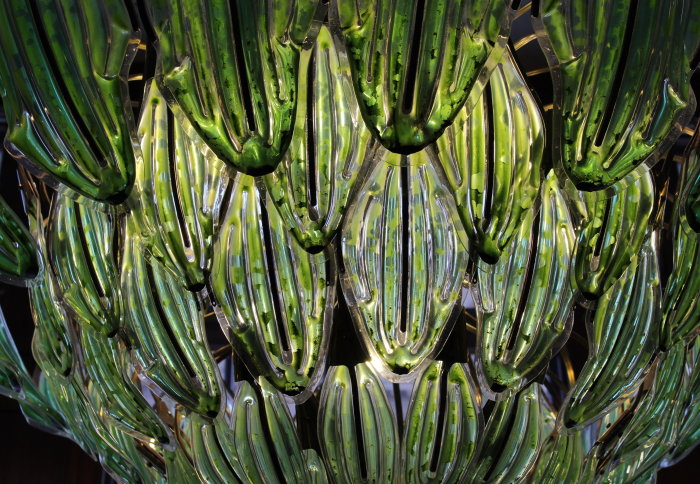The Grantham Institute are delighted to announce the six winners of the Grantham Art Prize who will be tackling climate change through their work.
Launched on Earth Day 2018 by the Grantham Institute - Climate Change and the Environment and the Royal College of Art (RCA), the inaugural competition aimed to merge science and art to create pieces that would be strong motivators for action on climate change.
"It was inspiring to read these proposals and to hear from young artists who want to contribute to the climate conversation and engage with a broader public through their intelligent and creative exposition of these crucial issues" Professor Juan Cruz Dean of Arts & Humanities, RCA
Art students from across the UK were encouraged to team up with Imperial researchers to create original concepts based on scientific fact that will compel observers to consider the moral and ethical implications of their choices.
The six winners have been set the task of creating a new work from scratch by 25 April this year, when all works will be displayed at an opening exhibition at Imperial College London to celebrate Earth Day 2019. Find out more about each applicant and see some of their previous work in the gallery below.
Professor Juan Cruz, one of the competition judges, commented: “Art is a powerful motivator of change and is already playing a vital role in helping us know and understand the complexities of climate change and the difficult choices we have to make to avoid its impacts.
It was inspiring to read these proposals and to hear from young artists who want to contribute to the climate conversation and engage with a broader public through their intelligent and creative exposition of these crucial issues that affect all of us. I am very much looking forward to seeing their work at the exhibition in April.”
The winners
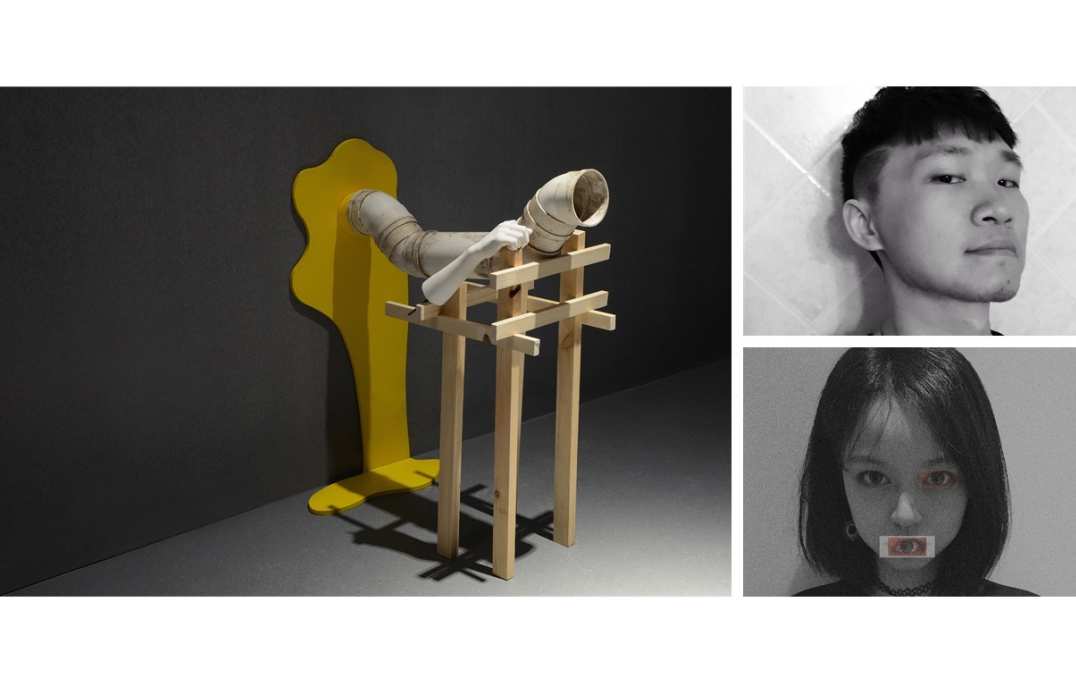
ZhengYi Zhang (top) & Qiaoer Jin (bottom)
Water pollution is a global environmental problem. This previous work by Mr Zhang, entitled ‘Break down’, looked at how human behaviour and poor governance resulted in a dramatic and vicious circle for one local area, when a sewage disposal factory actually became a source of water pollution.
Environmental artists Qiaoer Jin and ZhengYi Zhang have teamed up to depict a fictional future that will raise awareness about the inevitable consequences of climate change. “Our project will focus on the ultimate challenge that will be caused by climate change, the shortage of the resources. We will also explore the inherent absurdity of the division and ownership of natural resources. Under these circumstance, the whole of humanity is the victim,” said Ms Jin.
Their installation will combine their two specialisms, video and sculpture, to realise their imagined apocalyptic crisis.
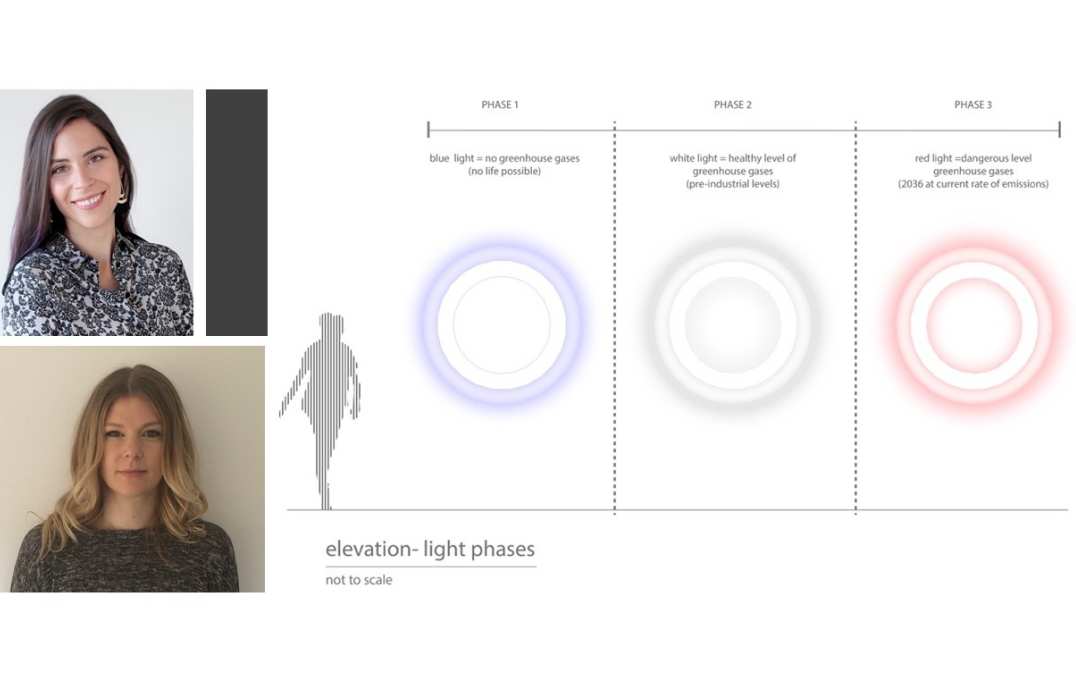
Fernanda Dobal (top) & Alison O’Reilly (bottom)
Fernanda Dobal and Alison O’Reilly will create a light installation that visualizes the effect of greenhouse gases on the planet. The image above shows the phases of light and the elevation relative to a human (not to scale).
Ms Dobal and Ms O’Reilly are two students enrolled at the Royal College of Art and Imperial College London who believe that public awareness is key to tackling climate change. Ms O’Reilly commented: “We think climate change is the defining issue of our generation and it is a topic we deeply care about. Our proposed light installation will use art and design to visualise the mechanics of greenhouse gases and their effects on the planet.”
“Climate Change is scary and can easily lead to feelings of helplessness. Our work aims to both be a call to action and give people an optimistic perspective on the impact they can have,” added Ms Dobal.
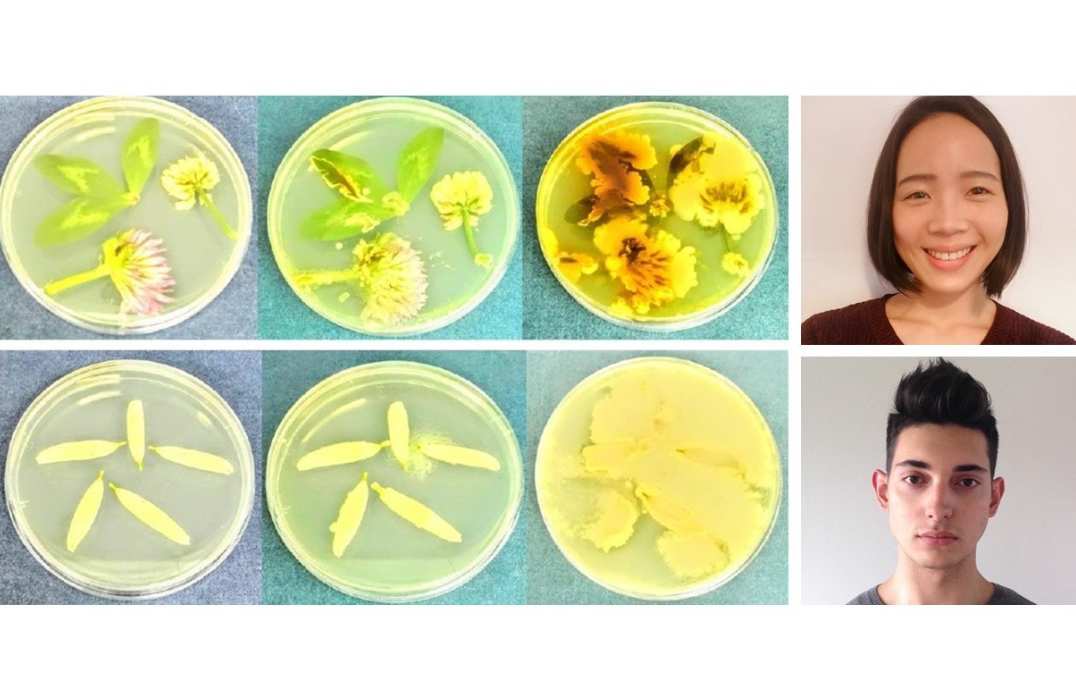
Miyuki Oka (top) & Barna Soma Biro (bottom)
These pictures are from Miyuki Oka’s previous project entitled ‘closed lives’. Natural objects such as flowers and leaves were put in agar and the changes that appeared as time passed were recorded. The project showed the subtlety of decomposition, in which many natural biological and chemical processes occur in succession.
Ms Oka and Mr Biro are going to create a time-lapse video and sculpture to remind people that action against climate change is not only about protecting some specific species or the living environment, but about securing humanity’s future by stopping the planet from becoming uninhabitable.
Ms Oka commented: “As well as focussing on coral bleaching, our piece will have a more general message on how we humans are also negatively affected by climate change through its impacts on the living environment. This point of view is important as it allows us to consider climate change as our own individual problem.”
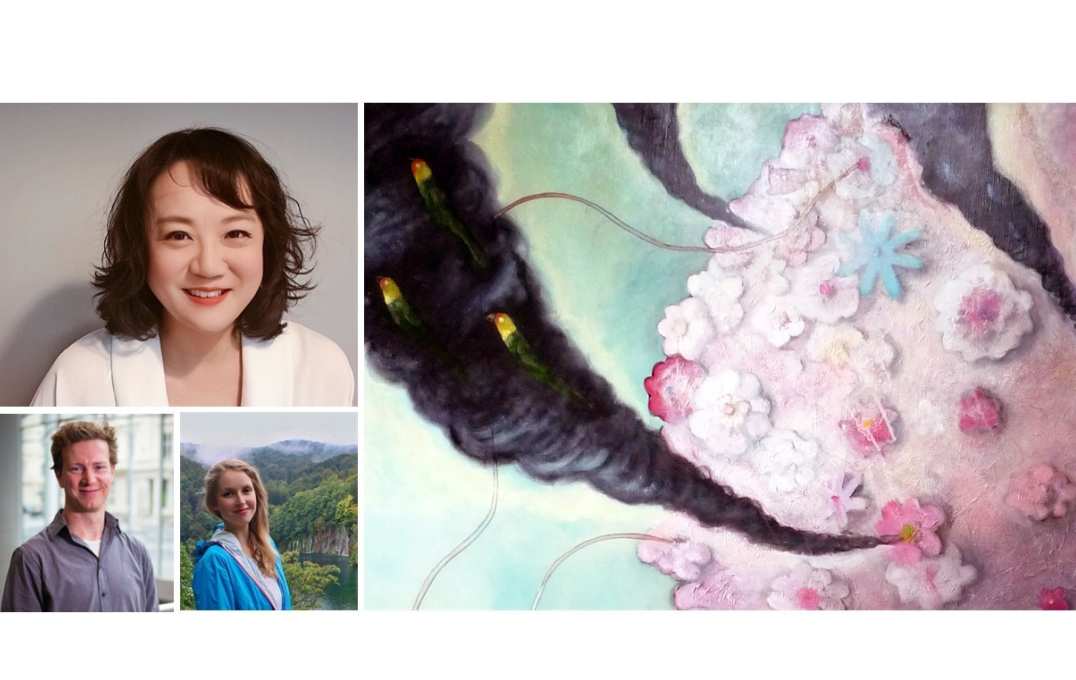
Michiko Yamamoto (top), Dr Kris Murray (bottom-left) & Sonia Tiedt (bottom-right)
This oil canvas painting, ‘Blossom in Alarm – Global Warming?’, is an example of Michiko Yamamoto’s previous work relating to climate change. Michiko has a long-standing interest in environmental issues and works to raise awareness of these problems through her art.
Ms Yamamoto has teamed up with Imperial’s own Dr Kris Murray and Sonia Tiedt to highlight the impact of human-linked greenhouse gas emissions in China and the USA.
“We will be presenting one striking example of a species vulnerable to climate change, the Yoshino cherry tree. This iconic tree is treasured by many all over the world, but we need to find a way to protect the trees from climate change impacts, including disease, invasive pest and native insect attack. My collaborators have been vital to the development of the work, Kris and Sonia’s research looks at how global changes, such as climate, can alter the distribution of species.”
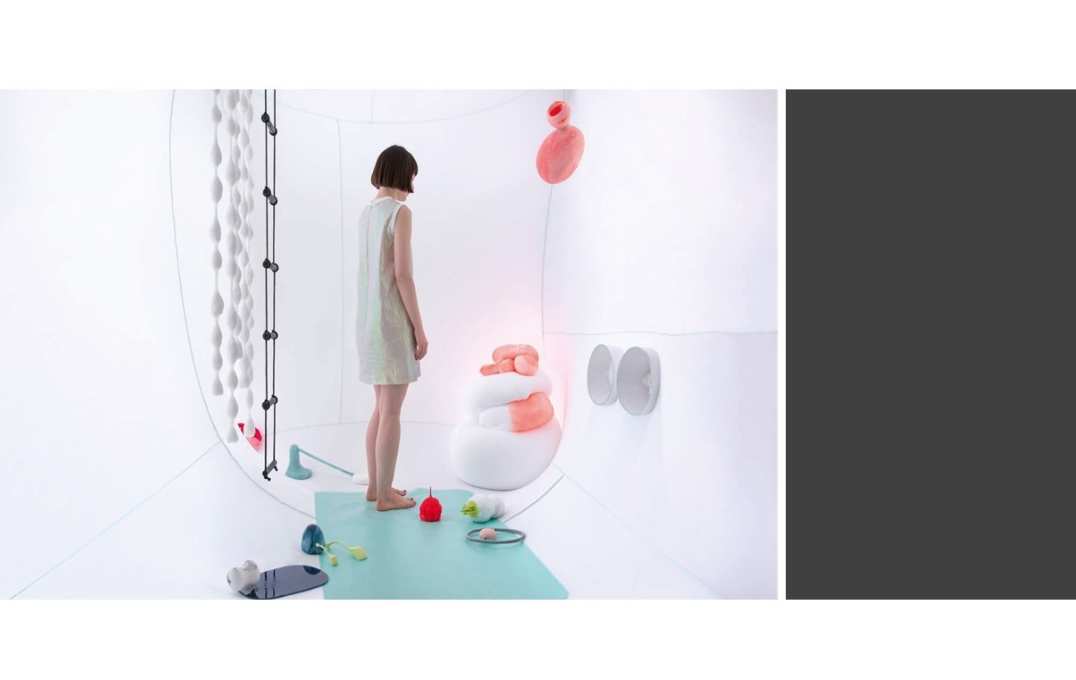
Johanna Schmeer
Johanna Schmeer’s previous work ‘Bioplastic Fantastic’ investigated new types of products and interactions which might emerge from material innovations in the fields of bio- and nanotechnology. It speculated about the future design and use of domestic products made from enzyme-enhanced bioplastics.
Speaking of her proposed piece, Ms Schmeer said: “The proposed artwork is titled ‘The inside is always a folding of the outside’. It is an installation in which plants and mushrooms are grown in micro-climates that simulate certain aspects of climate change, such as increased CO2 levels. It allows visitors to see, and taste, plants ‘from the future,’ as a basis to start discussions about the future of food, climate change, and geoengineering.”
Ms Schmeer will be creating three climate pods designed to simulate certain aspects of climate change and agriculture, the pods do not claim scientific accuracy but will attempt to get as close to it as possible.
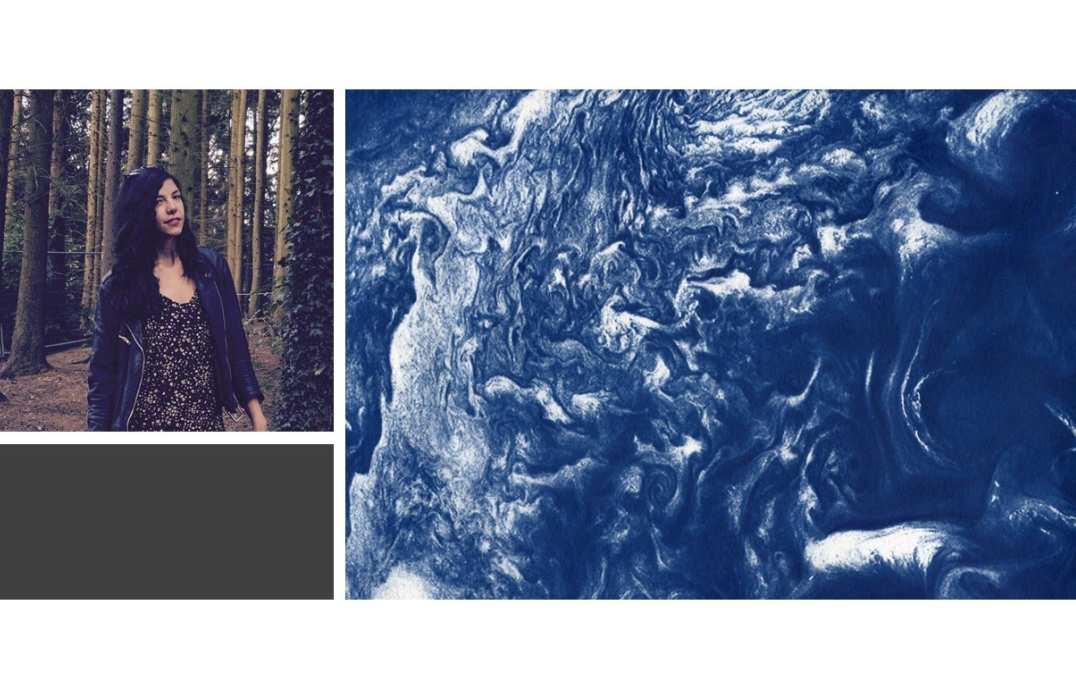
Melanie King
Melanie King’s practice aims to draw attention to the fragility of Earths’ ecology through astronomical images that she prints using a sustainable process invented 19th Century which bleaches the images into existence. The previous work pictured above is a cyanotype print of the Storms of Jupiter.
A series of anthotype prints will make-up Melanie King’s final work at the April exhibition, and will draw attention to glaciers melting and icebergs detaching.
Ms King commented: “I am constantly fighting against environmental dread, as I read news of plastic pollution, extinct species and tides rising. Environmentally and socially engaged arts practice allows me to communicate this urgency with others, as well as helping me to deal with my own fears about climate change. I hope that my piece acts as a contemporary Memento Mori, reminding us of the fragility of our existence on Earth, in an otherwise inhospitable universe.”
The winners were judged anonymously based on their concepts by a panel including:
- Professor Maggie Dallman OBE, Vice-President of Imperial
- Professor Juan Cruz, Dean of Arts & Humanities for the RCA
- Professor Martin Siegert, Co-director of the Grantham Institute
- Julian Melchiorri, Artist, Inventor and CEO of Arborea j
